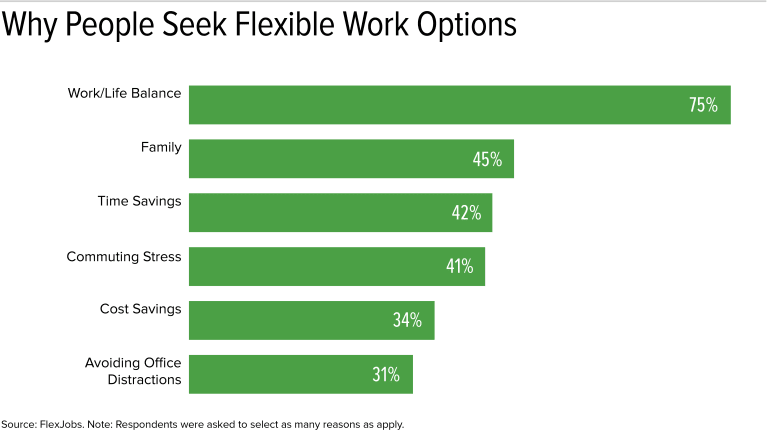Adapting to flexible work is one of the most dynamic changes that a business can introduce to boost engagement, increase productivity, and increase satisfaction rates. Considering the scope of benefits that are available to businesses, it’s no wonder that over 80% of companies now offer flexible work to some extent.
If your business has read about the benefits of this system and wants to give it a trial period, this is the article for you. We’ll chart the five main steps that you need to follow, offering a clear framework that will allow you to identify the style of flexible work that your business needs, implement it, measure its results, and hone your system.
Over the course of this article, you’ll set in motion the transformation that will bring your business into the modern age of workplace interaction. Let’s dive right in.
Steps to Flexible Work: Assess Your Organization’s Needs and Goals
The first step toward any new initiative is to identify why your organization wants to change and the core goals that are motivating that decision. For example, do you want to improve employee happiness, or is your main goal to increase rates of productivity? Knowing what your core goals are will allow you to create a measurable system that can prove the success or failure of your new framework.
Instead of starting with the main goals that your business wants to achieve, another way to approach this step is to look at what you need to improve. By discussing with your employees or looking at internal HR data, you could define a few core areas that need improving. For example, your business may have:
- Low employee retention rates.
- Low engagement at work.
- Declining satisfaction rates.
Flexible working frameworks can address all three of these common workplace occurrences. For example, over 58% of survey respondents suggested that a flexible schedule directly improved their job satisfaction.
Steps to Flexible Work: Identify a Suitable Flexible Working System
Once you’ve determined why you’re implementing this change, you can then begin to select which form of flexible working best suits your goals. For example, you could take a hybrid approach where people can come in whenever they’d like; alternatively, you could select a 4-day workweek or even offer flexible schedules.
A good way to determine what would have the best impact in your office is to directly discuss with your employees. No matter whether you’re a small, medium, or enterprise-sized business, the most important asset you have is the teams that make up your business. By directly discussing with them or sending out a business-wide poll, you can gather ideas about how to implement remote working.
The vast majority of employees will be happy with any format, but flexible working hours and locations are the leading choices. If you ask your employees to provide a reason, they’ll likely offer work-life balance as their main motivating factor, which you can achieve with the most flexible working frameworks.
Graph to show why people seek flexible working options.
Steps to Flexible Work: Establish Guidelines and Begin Flexible Work
After deciding how exactly you’re going to approach flexible working, you need to establish the guidelines. For example, will you have a minimum amount of time that employees will have to spend in the office, or will you let them have completely free reign?
Making clear guidelines will ensure that both you and your employees have a full understanding of how their working lives will shift. Create these guidelines and then distribute them to every single employee. If possible, have meetings with managers to explain the changes and have them communicate these findings to their team.
This chain of communication will ensure that everyone is up-to-date with how they are expected to engage with work.
Steps to Flexible Work: Implementing Tools to Monitor Productivity and Impact
One of the most important parts of creating a flexible working schedule is facilitating an easy transition. People will need to be able to work from home without impeding their ability to effectively contribute at work. With that in mind, you should search for collaborative working solutions.
Platforms like Microsoft Teams or Zoom will help with meetings, while organizational structures like ClickUp or Trello can help with management. Most of the time, the tool isn’t what’s important, with businesses only needing to expand their current offerings to incorporate this more flexible form of working.
This step to flexible work is essential as it will facilitate the change and allow your business to readily transition to this new style of engaging with work.
Steps to Flexible Work: Conduct Interviews, Review the Data, and Gauge How Effective Flexible Work Is
Finally, once your flexible working framework has been up and running for a few months, it’s time to conduct a review. There are a few core methods you can use to gather feedback and ascertain the impact of this new change.
For example, you can use employee surveys to understand how your workforce feels about the change. Equally, you can look at departmental metrics to make sure that productivity is improving.
By collecting all this data in one place, you can make a report that gives you a clear understanding of just how much flexible work is helping your business.
Final Thoughts
Implementing flexible working is one of the most impactful changes that a business can use to increase employee satisfaction, reenergize engagement, and boost productivity. In order to make the most of this working framework, organizations should use the steps outlined in this article.
Each of these steps gives a clear goal and charts the pathway to implement and arrive at the next step. Over these five steps, a business will be able to develop its strategy, launch its framework, and measure the results for future honing.
While these changes won’t occur overnight, setting this into motion is an incredible way of motivating employees and making a promise to your workforce – one that clearly defines you as ready to embrace the future of work.


